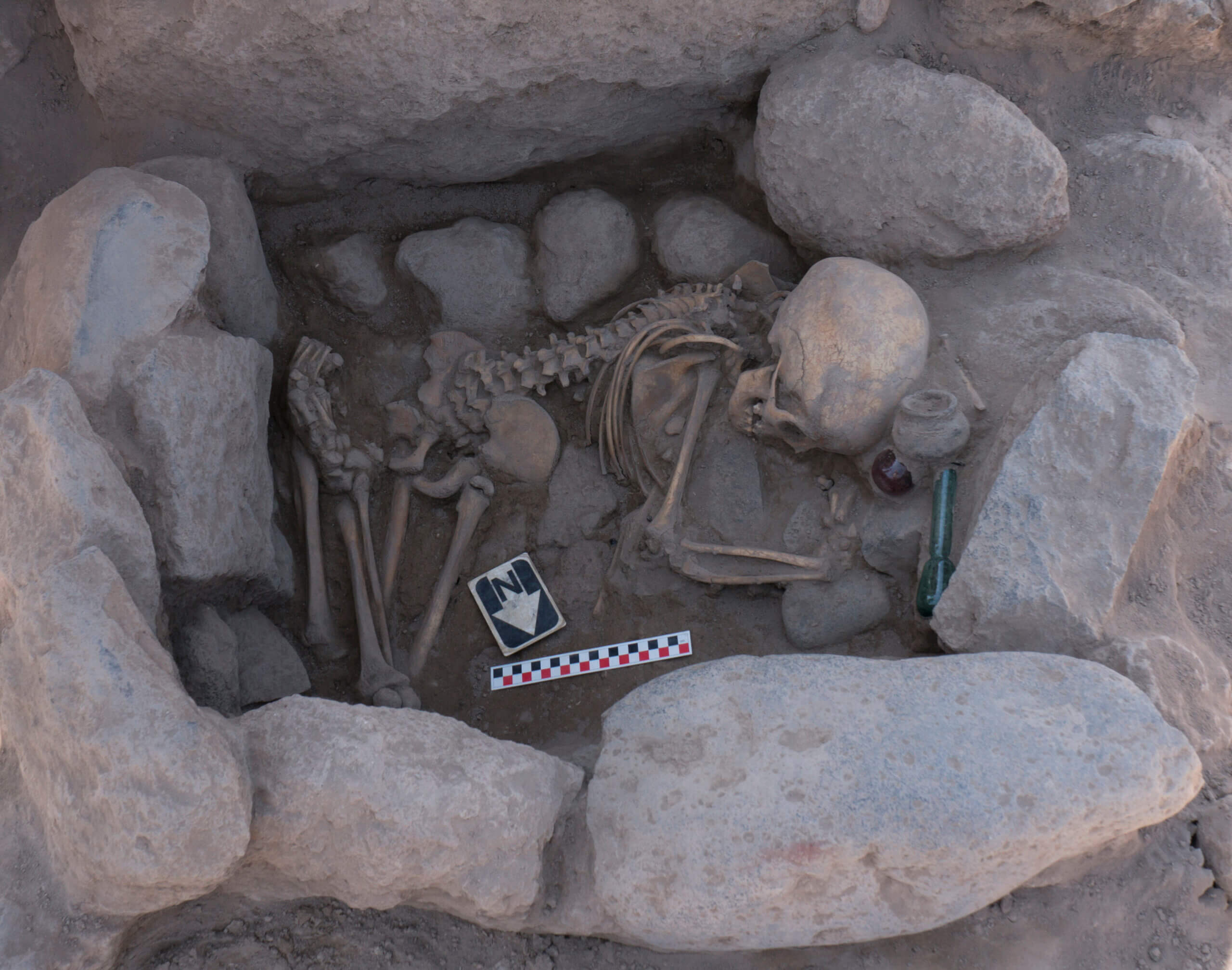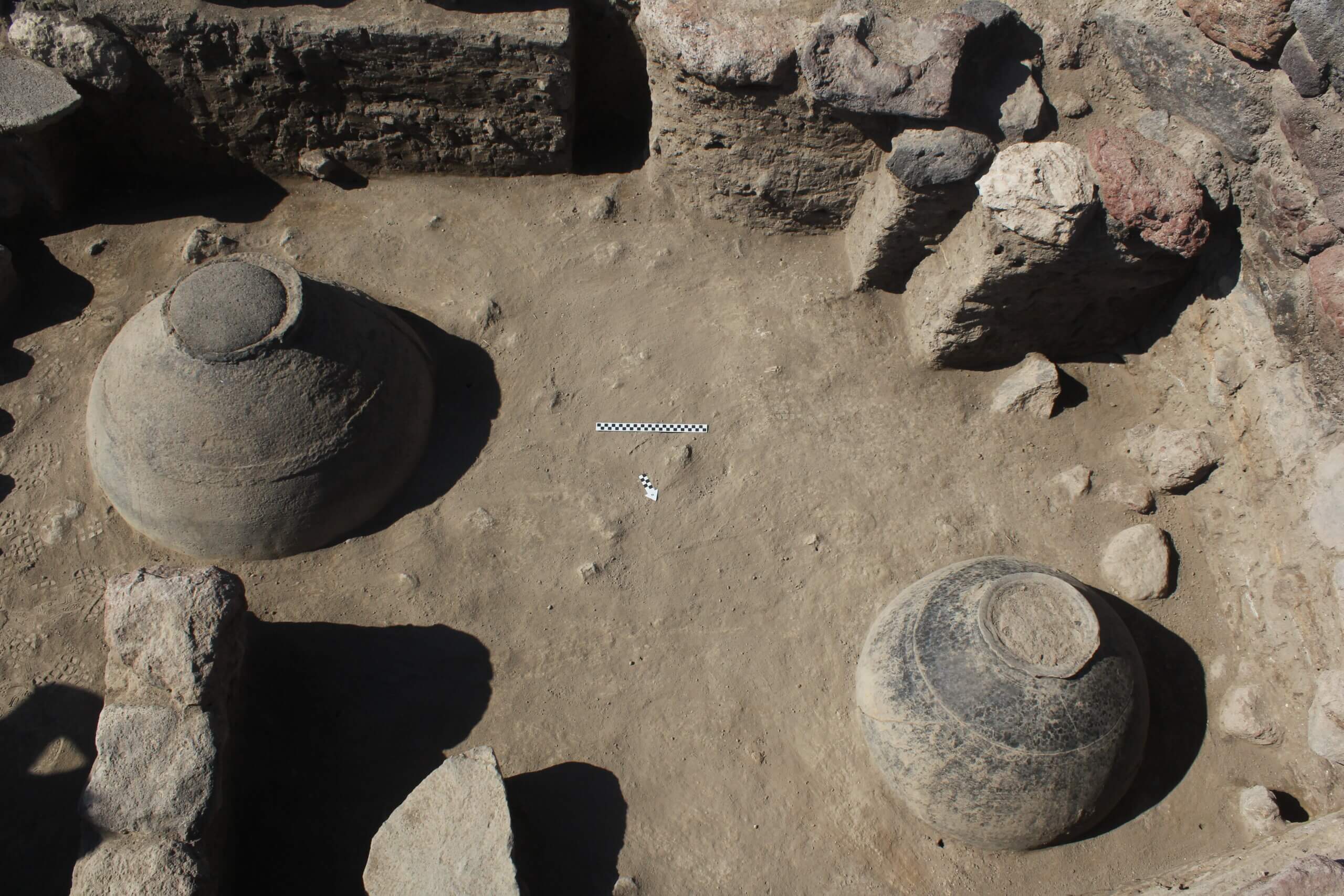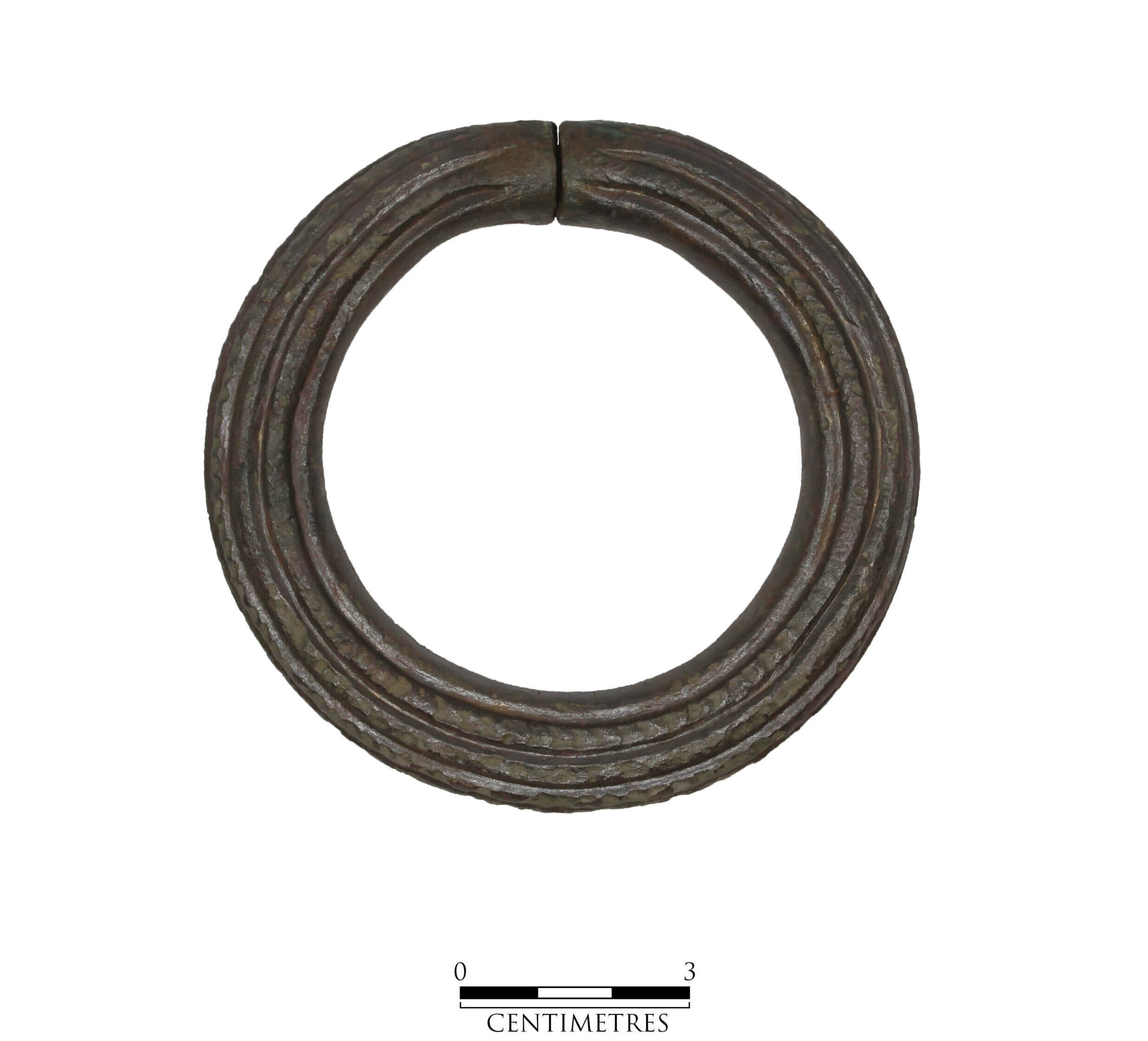The sixth season of the excavation in Metsamor took place between 30st of August and 01st of October 2018. The main goal of research was to explore eastern portions of the main trench, located around structures S8, S9 as well as nearby S1. In contrast to previous seasons, in 2018 no works have been done in the area of the cemetery. The team was divided into two separate groups, called Team A and Team B that have been working close to each other in two trenches of a total area about 200 square meters.

Main trench after 2018 season.
Team B focused on eastern sections of S8 and S9 that were partially explored during the campaign in 2017. Under the remains of badly preserved stone walls dated to the Achaemenid period the team led by Dan Socaciu and Astghik Simonyan has uncovered more architectural remains belonging to a large house from the Urartian period. In the course of excavation it turned out that structures S8 and S9 composed western rooms of the building together with newly discovered chambers S12, S13, S14 and S15. One of the most characteristic features of uncovered buildings is very solid double faced walls measuring 1 m in their thickness and preserved at 60 cm height. Judging from field observations and analogies from the 1st millennium BC preserved remains were only the foundation for a thick mud brick wall forming the wall superstructure. Most probably, due to the size of walls, the building has at least two storeys. Unfortunately in 2018 have not been found any traces of stone or clay staircase. One of the most striking features connected with habitation of the building is an absence of archaeological material on floor layers from discovered rooms. This feature may indicate that the building was abandoned gradually by its inhabitants, most probably at the end of 8th century BC. It should be noted that the last two decades of this century were marked by a huge political and, most probably, also demographic crisis in the Urartian kingdom as well as in the Ararat plain.

Excavation in the Urartian building.
As it was proven by the discoveries from 2018, several centuries after its abandonment, eastern part of the building served as a burial ground for local inhabitants. Three simple inhumations dated to Late Roman period (3rd- 4th century AD) were found buried in stone debris of rooms S12, S14 and S8. Two of them were particularly noteworthy. The first skeleton (labelled as no 10) belonged to a young girl around 10 years old which was buried in a small stone box in a flexed position. The girl was equipped with a necklace made of glass and gold beads as well as three small vessels (including two made of glass). Judging from the form of glass beads, the necklace could be an import from Levantine or Syrian workshops. Second interesting skeleton belongs to an adult male, most probably a soldier. It can be proven by several cured injuries that were visible on his bones. Additionally on his back still stuck an iron arrowhead which could have been the cause of his premature death.

Child buried in stone cist grave dated to 3rd-4th century AD.
At a time when team A was discovering burials from the Late Roman period, members of team A led by Elisabeth Bastien and Hasmik Simonyan made an interesting discovery inside of structure S1. During exploration of the chamber it appears that there was not one, but two storage jars that have been dug into the clay floor of a building older than S1. Despite the fact that the second jar was smaller, it was better preserved than the object found in 2017. Originally, both jars were used for storing several types of grain- from barley to wheat. Despite that, grain stored in both jars had been removed, just before abandonment of the building larger vessel was reused to hide two bronze bracelets. Most probably such bracelets were too heavy to wear on arms either by woman or man, thus it could have served as some sort of commodities by inhabitants of the building.

Two storage jars unearthed in 2018.
North from the chamber with storage jars, team A discovered the next rectangular room (S10) belonged to the same building. Thanks to fragments of carbonized wood found on the clay floor of the room, it was possible to carry out radiocarbon dating of the entire structure. Results of the dating indicate that the building with storage jars could have existed between 10th and late 9th centuries BC, that is prior to the expansion of the Urartian kingdom on the Ararat plain.
Season 2018 abounded in various types of artifacts and small finds. Apart from findings from burials, inside of uncovered rooms were found dozens of stone, bone and metal objects used for production and household activities such as weaving, smelting, grinding or cooking. Within the context of isolated finds, particularly noteworthy are stone and bone fragments of a dress found in waste pits such as elaborately carved bone pin with a cap in the shape of a duck.


Top- one of bronze bracelets found in storage jar. Bottom- decorated bone pin.
Team members:
Krzysztof Jakubiak, Ashot Piliposyan, Elisabeth Bastien, Kinga Bigoraj, Astghik Simonyan, Mateusz Iskra, Dan Socaciu, Marek Truszkowski, Artavazd Zaqyan, Otto Bagi, Joanna Dzik, Ewa Kwiatusińska, Zuzanna Lachowicz, Rachel McClenaghan, Jacek Mońka, Joanna Pawlik, Olga Puszkarewicz, Karolina Warecka, Menua Gevorgyan, Deborah Gawlikowska, Hasmik Simonyan, Lusine Aleqsanyan, Nerses Mamikonyan, Tigran Zakyan.

